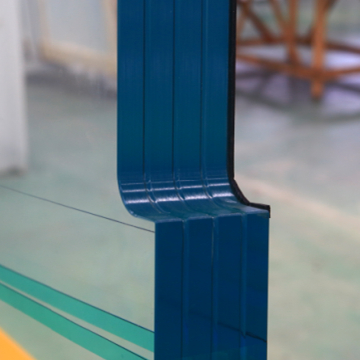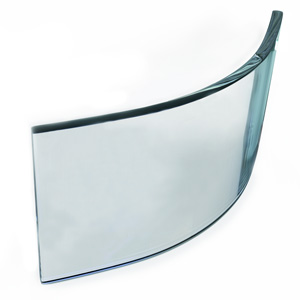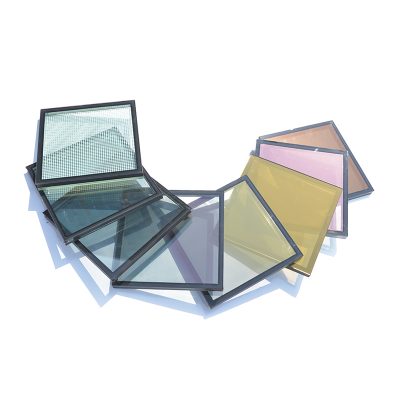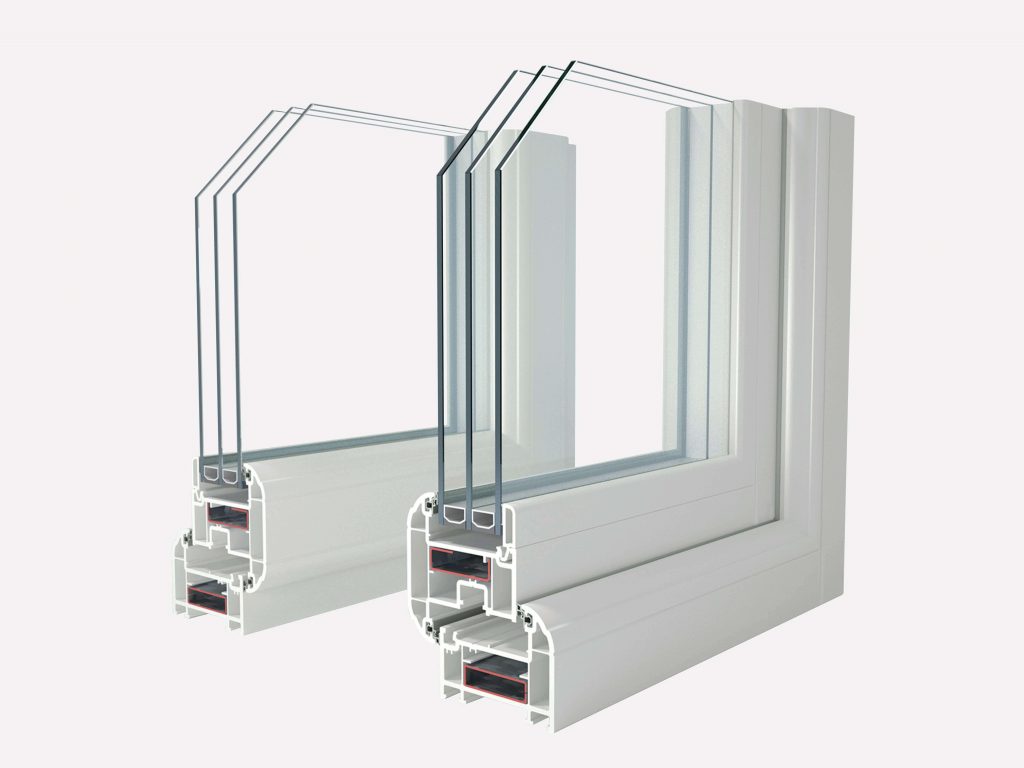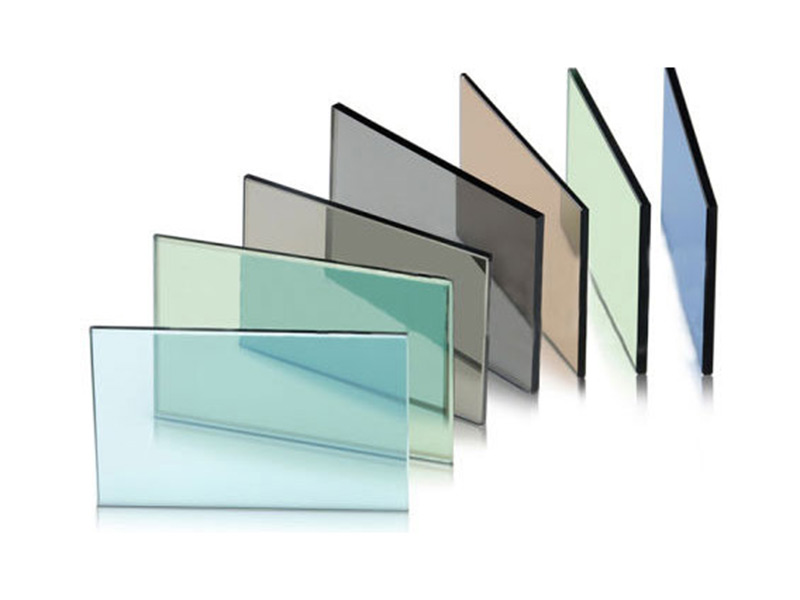Advanced technologies for printing on glass have changed the way we look at glass as a medium for interior and exterior surface design, whether for architectural, commercial, or industrial applications. The choice between digital printing vs screen printing methods today is based not only on the technique, but also on considerations such as location, quantity, trend, image, sustainability, and versatility, as well as more functional and utilitarian requirements.
Screen printing on glass
Screen printing also called ceramic printed glass is the oldest form of glass printing still in use. Suitable for both interior and exterior surfaces, it has long been the accepted method for high-volume, durable glass printing production, especially for automotive glass and industrial, large-panel architectural glass applications. Screen printing designs are created using a stencil and applied to the glass surface by spreading ink across a mesh screen. The stencil blocks out areas of glass, as the ink flows through onto the glass to create the design. The glass undergoes firing, providing a heat treatment in which the ink has adhered to the glass. Although screen printing on glass is highly durable with high print quality, the time and cost to set up each color is a disadvantage when the quantities required are not large. The method has a maximum capability of four colors, which also limits creativity and flexibility in design options.
Digital printing on glass
Digital printing on glass is more flexible than screen printing. There are two methods; UV-curable digital glass printing (also called digital UV glass printing) and digital ceramic glass printing. Both can print any digital image on glass, with the added advantage of a virtually unlimited color palette and fewer fixed costs. The differences are in the types of ink used, the printing method, and the drying process. It is those differences that lead to important differences in function and durability.
UV digital glass printing uses inorganic inks, and ultraviolet light to dry the ink on the glass surface. The lack of functional inks and limitations in durability and scratch-resistance limits the use of UV printing, especially in exterior design applications.
Digital ceramic inks are fused into the glass after printing, during the firing stage, so that the inks become an integral part of the printed glass. The versatility of digital ceramic printing on glass provides not only the unlimited design potential to print any image, pattern text, or graphics, but also the versatility to reproduce the appearance of surface textures such as wood grain or marble.
Screen printing V.S digital printing
Very often our clients tend to let us make the decision on which print technique will be best for their needs after we’ve had a chance to take a look at their design and the specified print materials. For example, we can generally use screen printing or digital printing for most flags and banners we produce, but where clients require high levels of vibrancy and contrast we will usually recommend screen printing.
It’s difficult, though, to state categorically which technique is better as the answer is really not that obvious. Clients with a requirement for a good deal of signage or display requirements often opt for a mix of screen print and digital print solutions, dependent on the clarity and colour contrast needed in the final print products. See more detail on some of the pros and cons of each print technique below.
Benefits of digital printing
We often recommend digital printing for customers looking for one-off prints and small quantity print runs and it is suitable for a variety of print materials. Advantages include:
1. low cost set up and speed of turn around
2. easy to print in a range of different colours
3. transfer photographic images accurately
4. best for one-off or short print runs
5. prints can be customised in a variety of ways
6. designs sit flat on the print material and do not bulge out from the surface
Cons of digital printing
- the range of printable fabrics is more limited than with screen printing
- the print is not so durable
- the colour white cannot usually be reproduced within the print
- due to fixed pricing, bulk printing does not offer scaled cost reductions
As can be seen, digital printing is really ideal for small print orders where it’s important to be able to include a number of different colours and customisation effects or photographic imagery. Where clients need to print on lighter coloured materials, though, digital printing may not be suitable if the printer cannot utilise white ink. The other main drawback of digital printing is that it’s just not as durable as screen printing, but it’s an absolutely ideal solution for unique events and one-off display purposes. And, finally, you won’t achieve economies of scale in print costs if you opt for digital printing as prices remain the same, irrespective of the number of prints required.
Benefits of screen printing
When it comes to screen printing, one of the major benefits is that it’s a really effective solution for bulk printing as its extremely cost-efficient. Other benefits include:
- a higher quality output than digital prints
- more durable for prints that are needed over the long-term
- can be used on a variety of different print materials, including glass, wood, textiles, signs, banners, electronics, and much more
- it’s easy to print on specified areas of the print material
Disadvantages of using screen printing
One of the main disadvantages of screen printing is that it has a much higher initial setup cost than digital printing and takes more time. Other cons of screen printing include:
- more limited colour ranges available
- the amount of ink used can make the design look as if it is raised from the print material
- it cannot be customised in the manner of digital printing
We always advise clients to opt for screen printing if they need higher quality, more professional appearance for prints. However, we ensure our clients are aware of the extra amount of time needed to prepare the screens and the cost implications of screen printing. Screen printing is most suitable for bulk orders that don’t require much customisation or wide use of different colours. Contemporary developments in digital printing also mean that it’s more widely used for a number of different print materials nowadays, including glass and wood.
Digital printing& screen printing glass price
Price mainly consists of two parts, transportation and raw materials, we quote according to your specific volume and product requirements of the specifications, there are related project information consulting can also contact us via enquiry@wallkingdonglass.com
Digital printing& screen printing glass supplier
Wallkingdon Glass is a leading glass supplier in China for architectural and interior glass.
We have digital printing & screen printing glass printer to produce the glass.
If you have any question for digital printing & screen printing glass, pls kindly contact us via enquiry@wallkingdonglass.com
Wallkingdon Glass provide topnotch products and services to exceed our customers' expectations. With the precious inputs and creativity from designing experts, our high quality glass products allow clients to have cost effective solutions while keeping quality to highest level. Our products are strictly in accordance with the standard of BS/EN, AS/NZS, ASTM,ANSI and etc.
Our main glass products are laminated glass, insulation glass, low-E glass, SentryGlas, digital printed glass, ceramic frit glass multi-curved glass and etc.
As a professional supplier, Wallkingdon glass has become the leading company in China glass industry.


